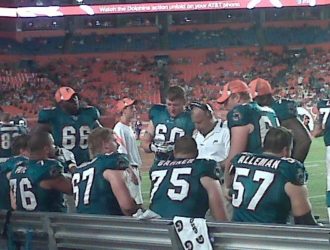Here’s a statistic broadcast TV stations heavily invested in live sports play-by-play may not like to digest: Your audience has not only a touch of grey, but it’s becoming a Silver Convention.
Topline details from the September 2017 MAGNA U.S. Sports Report were shared by Axiom.com, and here’s the key takeaway for the broadcast TV industry’s C-Suite: The median age of adults watching live sports on TV has increased across every sports broadcast nationally.
Should this trend hold, ad dollars could be in flux, upending an industry that has spent millions of dollars on rights acquisitions with the expectation that high viewer—and advertiser— return would make the investment a profitable one.
Of course, Magna is not suggesting that viewing of live sporting events is decreasing.
It’s simply not taking place on live TV. As Axiom notes, “Advertisers typically rely on live sports to reach a relatively young, engaged audience, particularly for consumer goods. That live TV audience seems to be migrating to digital pretty quickly.”
Magna gathered data reflecting regular season viewership, where available.
The aging median TV audience for live sports may not be surprising to some market observers. But, the numbers are sobering.
Major League Baseball continues to have the highest median age for live TV viewers. In 2000 it was 51 years of age. In 2016, it was 57 years of age.
The slowest pace of viewer aging is seen with two sports highly popular with multicultural audiences, which tend to be younger than the total population: pro basketball, and soccer.
The median age of live TV viewers to NBA regular-season telecasts moved to 42 in 2016, from 40 in 2000. Soccer viewers’ median age in 2016 was 39, compared to 36 some 16 years earlier.
Meanwhile, the median age of live TV viewers to NCAA basketball and football, National Football League, and tennis coverage is now at least 50.
In fact, aside from the NBA and soccer, boxing and the National Hockey League are the lone sports to have median live TV audiences younger than 50 years of age.
The median age of live TV viewers of NHL telecasts is now 49, a sharp rise from 33 years old in 2000.
The median age of live TV viewers of boxing matches is also 49, shifting from 45 in 2000.
Meanwhile, Magna made a prediction that may make NBCUniversal executives queasy: Live viewing for the 2018 FIFA World Cup and the upcoming Olympic games from Sochi, Russia, is expected to decline.
Yet, streamed video consumption for these respective events is expected to set records.
While the data appear bleak, there is a silver lining amid the silver-trending stats for live sporting events on TV: Regional sports networks such as YES Network and NESN have been better at retaining viewers compared to national players such as ESPN and its array of sister networks, FOX Sports, and NBC Sports Network.





